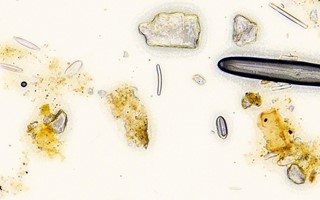News January 13, 2022
Originally designed by law enforcement and the CPS with a view to expediting court cases in England and Wales, a streamlined forensic report (SFR) documents the results of forensic testing undertaken. The premise here is that the crown presents their forensic scientific findings on an SFR1 to the defence as early as possible. The defence then either accept or refute the evidence and raise it as a ‘real issue’.
When it is raised as a ‘real issue’, the crown is required to either undertake additional testing or provide further detail on their findings in the form of an SFR2 in advance of a trial.
The idea was that, by using this system, it would allow for cost efficiencies and reduce the lengthy delays that can occur during the course of a case. In practice, however, this is not strictly true.
No time or cost saving as a result
At Forensic Access we see many cases nearly getting as far as trial on an SFR1. This is predominantly down to a lack of awareness of the system, or because the pertinent evidence is served on the defence at such a late stage.
Once the lack of SFR2 has been highlighted by the solicitor raising a real issue, the trial must then be put back. This is to allow the crown scientist to undertake the additional work and for the defence expert to review this subsequent work. This means that there is no material time saving in the process.
Often the judge will not allow for the trial to be delayed. As such, the work by the crown forensic expert and the defence expert witness is undertaken urgently and incurs additional charge. In this respect, there is not a cost saving either.
Authorship by computer not confirmed by a scientist
Some police forces use an automated system to generate their SFR1 reports. If a sample from a crime scene is loaded to the National DNA Database and it matches against your client’s profile, for example, the force will be alerted to the match and a member of the administration team will produce an SFR1.
The SFR1 detailing the ‘match’ will be put to your client in an interview, without the DNA match having been viewed or confirmed by a forensic DNA expert. This is why it is of vital importance to ask the right questions of the officer in the case, as well as calling and speaking directly with an expert who can advise you.
Examinations undertaken and reported by SFR1’s by an unaccredited and untrained member of police personnel
We are increasingly seeing forensic firearms and ballistics investigations where an SFR1 is provided by a force armourer. Often, armourers are members of police staff who have generally not had specific training in the examination of firearms or firearms law. Additionally, they often have no experience of producing reports suitable for court or giving evidence in a trial.
The procedures and processes that armourers follow are not documented to ensure consistency and are not accredited by UKAS. As such, the Forensic Science Regulator (FSR) has stated that a case ought not go to trial on their opinion. Instead, the defence must challenge the SFR1 and then the exhibits must be sent to an accredited firearms expert for proper examination.
The organisations in England and Wales that have appropriately trained and accredited staff undertaking firearms examination work are:
- Forensic Access Ltd
- Eurofins Forensic Services Ltd
- Key Forensic Services Ltd
- Metropolitan Police Laboratory
- Greater Manchester Police
- Merseyside Police
- South Wales Police
- West Midlands Police*
It may not immediately be obvious from your SFR that the opinion given is that of a force armourer as opposed to a forensic firearms expert. This can have a material effect on your case.
A recent case examined by our firearms experts had previously been examined by a force armourer and a classification given. The method that the armourer used to reach his conclusion was found to be both flawed and unaccredited. Despite this, the police had charged the defendant based on the armourer’s classification. After a defence solicitor challenged the SFR1 and the weapon was sent to our lab for examination, the charges were dropped by the crown.
According to the Forensic Capability Network, the approved evidence types for streamlined forensic reporting includes:
- Crime Scene Investigation
- Fingermark identifications
- National DNA database match reports
- Drugs
- Footwear
- Firearms Classification
- Toxicology
- Digital Forensics
- Biology Casework
- Questioned Documents
- Medical
- Fire Investigation*
There may be evidence useful to the defence that isn’t present in the SFR
The crown uses SFRs to present information to the court that is pertinent to their case. This can mean that the evidence that does not support their case is omitted. This is particularly important in the way of defence proceedings.
For example, let’s consider an SFR with the exhibit number of the swabs discussed as KMP/1/4. This means that there have been at least 3 other sub exhibits taken from the item: KMP/1/1, KMP/1/2 and KMP/1/3. Sub exhibits are used in forensic science to denote samples that have been taken from a larger exhibit. They can be tested immediately, at a later date or in some cases not at all. The sub exhibits can be found in the form of swabs, hair and fibre tapings or sections of material stained with a body fluid of interest. It is imperative that you enquire as to what these additional results show.
Additionally, when a single gun is swabbed for DNA, swabs are usually taken from approximately 12-15 areas. Therefore, there may be other swabs that have been submitted for DNA profiling. This is often done in a staged approach, causing the case to become fragmented.
SFRs can be considered to be a minefield and to the untrained eye they can be difficult to interpret. Our scientists at Forensic Access can review your SFR and advise whether you should challenge it. We can also outline the results that your challenge may hope to achieve.
To find out more about the forensic services we offer, you can speak with a member of our team on 01235 774870 or fill-in our online contact form.
*Correct at time of publication


